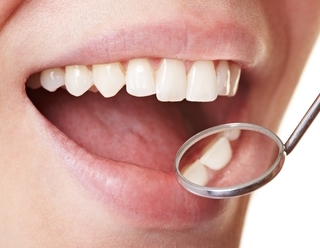
Whether you’re on a date, in a business meeting or simply enjoying some time with your friends, one of the first things people notice about you is your smile. In fact, there’s an old saying that goes like this, “Smile and the world smiles with you.”
But what if you’re afraid to smile? What if you’re missing one (or more) more of your teeth due to poor dental hygiene, lack of adequate dental care or even a simple mishap that results in losing some teeth?
There have been a few solutions to this problem in the past. Most dentists would recommend a dental bridge or a dental implant to correct the issue. Getting some form of help for the missing teeth was essential because the loss of your teeth can lead to tooth decay, gum disease and misaligned teeth. Also, your body will quit sending the proper amounts of calcium and other nutrients to the jawbone surrounding the area of the missing teeth.
While those are still good options for those in need of dental help, these solutions fail to reproduce a natural root structure around the teeth. As a result of the lack of a natural root structure, the constant jaw movement from eating can cause a loss of jaw bone around the dental implant. Fortunately, a new solution is on the horizon. It’s a solution that doesn’t involve dental bridges or implants. People who are missing teeth may soon be able to skip dentures and regrow their missing teeth.
The road to growing missing teeth began when scientists developed a bioengineered material that is generated from the gum cells of a person. The research is led by Professor Paul Sharpe from London. Professor Sharpe is an expert in craniofacial development and stem cell biology at King’s College London. The bioengineered teeth, known as “bioteeth,” are the result of research focused on generating immature teeth (AKA teeth primordia). The immature teeth are designed to resemble or copy those teeth in the embryo that can then be relocated into the adult jaw where they will develop into fully functioning teeth.
Professor Sharpe was in charge of a study that was focused on “Adult Human Gingival Epithelial Cells as a Source for Whole-Tooth Bioengineering.” The goal of the research conducted by his team, published in the “Journal of Dental Research,” was the creation of a suitable alternative to dental implants. The suitable alternative goal they were aiming for was producing fully functional teeth.
The research team utilized human gum material that they isolated and then grew more of the material in their lab. The tooth buds developed in the lab were then transplanted into a group of test mice. The material developed by the research team was combined with the cells that form teeth in mice. Not only did the mice not reject the tooth buds (embryonic teeth primordia), the mice also developed functional teeth.
While the experiment worked to create functional teeth in the test group of mice, there is still a long way to go before the process will work on human beings. According to Professor Sharpe, there is still a need to find suitable cells that can be combined, as in the mice test group, to produce an immature tooth in a human being. If such a combination of cells can be found then it’s quite possible that growing replacement teeth for people can become a reality.
- MA